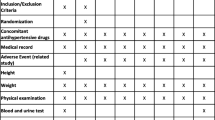Abstract
BACKGROUND
In 2005 the American Heart Association (AHA) released updated recommendations for blood pressure (BP) monitoring in order to ensure accurate BP measurements.
OBJECTIVE
To determine if current methods of BP assessment in an ambulatory clinic result in significantly different BP measurements than those obtained by following the AHA recommendations and if these BP differences impact treatment decisions.
RESEARCH DESIGN
Randomized prospective analysis.
SETTING
University of New Mexico Hospital Adult Internal Medicine clinic.
PATIENTS
Forty adults with hypertension
METHODS
Patient BPs were measured using both the traditional triage method and the AHA-recommended method in cross-over fashion in random order. Two complete medical profile summaries were then constructed for each patient: one for each BP measurement obtained by each technique. These profiles were then reviewed by a panel of providers who provided hypothetical hypertension treatment recommendations.
RESULTS
Individual BP results varied greatly between the two methods. SBP readings differed by ≥5 mmHg in either direction for 68% of patients while 78% of patient’s DBP readings differed by ≥2 mmHg in either direction. Overall, 93% of patients had a BP difference of either ≥5 mmHg systolic or ≥2 mmHg diastolic. Five patients were determined to be at goal with the triage method, but were higher than their goal BP with the AHA method Significant differences were also seen in treatment recommendations for a given patient based on the differences seen between the two obtained BP readings. The number of patients with treatment variations between their two profiles ranged from 13% to 23% depending on the reviewing provider (p < 0.01 for all providers).
CONCLUSION
Inaccurate BP assessment is common and may impact hypertension treatment decisions.



Similar content being viewed by others
References
Chobanian AV, Bakris GL, Black HR, et al. Seventh report of the joint national committee on prevention, detection, evaluation, and treatment of high blood pressure. Hypertension. 2003;42:1206–52.
Thom T, Haase N, Rosamond W, et al. Heart disease and stroke statistics- 2006 update. A report from the American heart association statistics committee and stroke statistics subcommittee. Circulation. 2006;113:e85–151.
Manning DM, Kuchirka C, Kaminski J. Miscuffing: inappropriate blood pressure cuff application. Circulation. 1983;68:763–66.
Fonseca-Reyes S, Garcia de Alba-Garcia J, Parra-Carrillo JZ, Paczka-Zapata JA. Effect of standard cuff on blood pressure readings in patients with obese arms. How frequent are arms of a large circumference. Blood Press Monit. 2003;8:101–106.
Pickering TG, Hall JE, Appel LJ, et al. Recommendations for blood pressure measurement in humans and experimental animals. Part 1: blood pressure measurement in humans. A statement for professionals from the subcommittee of professional and public education of the American Heart Association council on high blood pressure research. Circulation. 2005;111:697–716.
Webster J, Newnham D, Petrie JC, Lovell HG. Influence of arm position on measurement of blood pressure. Br Med J. 1984;288:1574–75.
Mourad A, Carney S, Gillies A, Jones B, Nanra R, Trevillian P. Arm position and blood pressure: a risk factor for hypertension? J Hum Hypertens. 2003;17:389–95.
Lane D, Beevers M, Barnes N, et al. Inter-arm differences in blood pressure: when are they clinically significant? J Hypertens. 2002;20:1089–95.
Pinar R, Sabuncu N, Oksay A. Effects of crossed leg on blood pressure. Blood Press. 2004;13:252–54.
Chiolero A, Gervasoni JP, Rwebogora A, Balampama M, Paccaud F, Bovet P. Difference in blood pressure readings with mercury and automated devices: impact on hypertension prevalence estimates in Dar es Salaam, Tanzania. Eur J Epidemiol. 2006;21:427–33.
Campbell NRC, Culleton BW, McKay DW. Misclassification of blood pressure by usual measurements in ambulatory physician practices. Am J Hypertens. 2005;18:1522–27.
Kim JW, Bosworth HB, Voils CI, et al. Brief report: How well do clinic-based blood pressure measurements agree with the mercury standard? J Gen Intern Med. 2005;20:647–49.
Verdecchia P, Staessen JA, Angeli F, et al. Usual versus tight control of SBP in non-diabetic patients with hypertension (Cardio-Sis): an open-label randomized trial. Lancet. 2009;374:525–33.
Whelton PK, He J, Appel LJ, et al. Primary prevention of hypertension clinical and public health advisory from the national high blood pressure education program. JAMA. 2002;288:1882–88.
Cook NR, Cohen J, Herbert PR, Taylor JO, Hennekens CH. Implications of small reductions in diastolic blood pressure for primary prevention. Arch Intern Med. 1995;155:701–9.
Turner MJ, Baker AB, Kam PC. Effects of systematic errors in blood pressure measurements on the diagnosis of hypertension. Blood Press Monit. 2004;9:249–53.
Acknowledgements
This study was not supported by any internal or external funding.
The authors would like to acknowledge the physicians and staff from the UNM Internal Medicine Clinic.
Conflict of Interest
None disclosed.
Author information
Authors and Affiliations
Corresponding author
Rights and permissions
About this article
Cite this article
Ray, G.M., Nawarskas, J.J. & Anderson, J.R. Blood Pressure Monitoring Technique Impacts Hypertension Treatment. J GEN INTERN MED 27, 623–629 (2012). https://doi.org/10.1007/s11606-011-1937-9
Received:
Revised:
Accepted:
Published:
Issue Date:
DOI: https://doi.org/10.1007/s11606-011-1937-9




